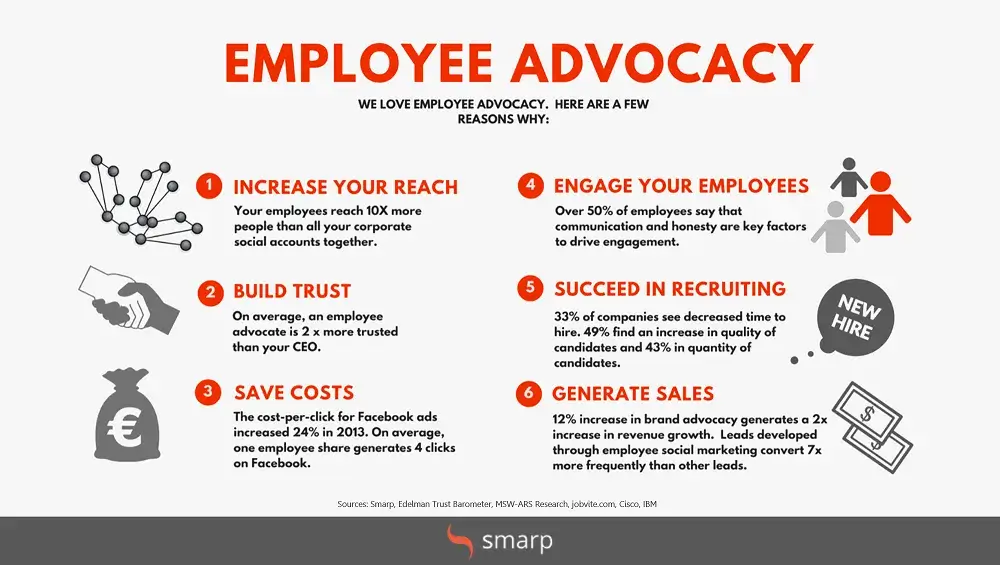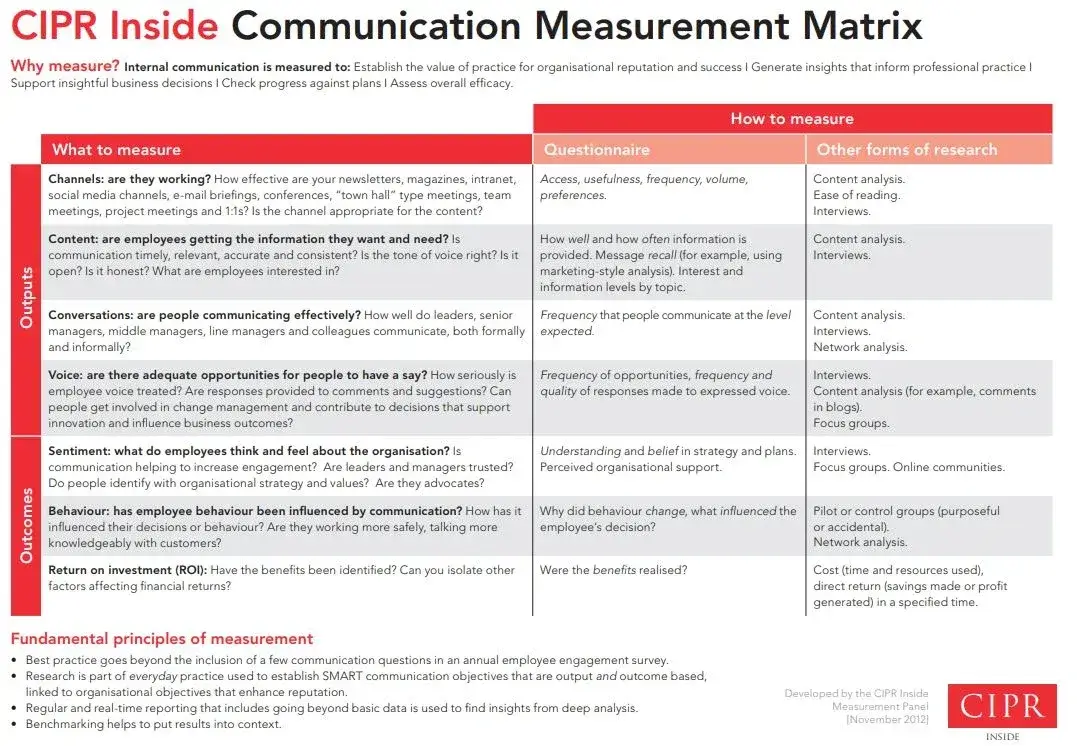Internal communications is a crucial department of every organization. Companies use internal communications to keep their employees informed and engaged about everything that is going on in their organizations.
In this blog, you will find out about why internal communications are important, who is responsible for internal comms and how to develop a successful IC strategy.
Get a proper internal comms platform to support your IC department
What are Internal Communications (IC)
According to Wikipedia, Internal communications (IC) is the function responsible for effective communication among participants within an organization.
The scope of the work within IC departments varies by organization and practitioner. They can be responsible for producing and delivering messages and campaigns on behalf of executives and managers, facilitating two-way dialogue and developing the communication skills of the employees.
14 Reasons Why Internal Communications are Important
Most large organizations have internal communications departments. Having thousands of employees can make communication among employees hard and inefficient. Therefore, internal comms professionals are there to facilitate collaboration and deliver a better employee experience.
Here are a few main reasons why should you have an internal communications department.
1. Employee engagement
According to research about employee engagement, 90% of leaders understand the importance of employee engagement. However, only 50% of them know how to fix this issue.
Internal communications play a crucial role for improving employee engagement. It has been proven that companies with better internal communications have much higher rates of employee engagement.
This is how you can improve employee communications to drive better employee engagement include:
- Set clear employee expectations.
- Keep your employees informed.
- Make it easy for employees to find important information.
- Encourage open communication to identify obstacles and issues.
- Focus on employee feedback and recognition.
- Encourage discussion and sharing of thoughts.
2. Employee satisfaction
Employee engagement is related to employee satisfaction. In general, less engaged employees are less satisfied. Poor internal communications can be one of the main causes for that.
Moreover, 65% of US employees say that the way employer communicates with them impacts job their satisfaction. 45% of them say that their employer does not do a good job communicating with employees.
3. Employee productivity
Good employee satisfaction and engagement boost employee productivity. Companies with well structured internal communications enjoy higher productivity, revenues and profits. Moreover, organizations with highly engaged employees have an average 3-year revenue growth that is 2.3 times greater than companies with less engaged teams.
If your employees know exactly what their goals are, if they are up-to-date with what is happening in the company and if you give them constant feedback on their work, they will work harder towards achieving their goals.
Check out these 5 ways how better communication can boost employee productivity.

Change management
One of the main duties of every internal communications professional is to communicate changes within the company. 94% companies with effective change management meet or exceed their project objectives.
In the world of agile work culture, employers need to have a strategy for a fast and efficient change management.
Most changes regarding your company’s service, product, customers or employees are important to be communicated with other people.
Here are a few tips on how to communicate for effective change management.
- Communicate consistently and frequently
- Communicate through multiple channels such as speaking, writing, video, training, focus groups, bulletin boards and internal communications tools.
- Communicate on time and allow employees to get ready for the change.
- Deliver all the important information about the change.
- Explain how the change will affect the organization or individual jobs.
- Make sure to present the pros and cons of the change.
- Involve people and ask them about their opinions.
- Encourage two-way communications.
- Organize one-on-one or group meeting for the ones that will be greatly affected by the change.
- Listen and provide timely answers to employees’ questions and concerns.
- Organize and hold interactive forums or workshops.
- Make communication among employees easy.
- Track the change management progress.
- Reward employees who have successfully implemented assigned changes.
5. Teamwork
Internal communications are extremely important when it comes to teamwork encouragement and facilitations.
Most jobs today require working in groups. For that to be possible, employees and team leaders need to be able to easily communicate with each other.
Therefore, companies who have invested in internal comms have much higher chances to optimize teamwork within their organizations.
6. Employee advocacy
When you have informed employees who show high levels of motivation, you have a good chance of turning them into brand ambassadors.
Employee advocacy is something that every employer is trying to achieve and internal communications are crucial for that. Find your potential brand ambassadors, include them in an employee advocacy or social selling programs and reward them for doing so. It’s a win-win for both employers and employees.
7. Brand awareness
With employee advocacy comes higher brand awareness. Your employees can reach 10 times more people than all of your organization’s Social Media channels.
Ultimately, there’s no better advertisement for your brand than happy employees and happy customers.
Here are a few more benefits of employee advocacy.

8. Employee retention
Employee communications and relations have a big impact on employee retention. Employees who feel like they are not informed, feel left out or are uncertain about their goals often changes jobs.
On average, companies with poor communications and disengaged employees have a turnover rate of 34%.
Millennials and younger generations want ongoing conversations, constant communication and feedback. If you want to stop them from leaving, you will have to improve your internal comms strategy.
9. Employee empowerment
If you want to empower your employees, you need to communicate with them properly. Constant communication and feedback is necessary to improve employees’ decision making.
Giving employees autonomy and responsibility to make decisions on their own is important for employee motivation and retention.
As per a survey by TINYpuls, when employees feel that they are empowered to make decisions, they are 20% more likely to stay in their roles.
However, many employers are still not sure about how to empower their employees.
Trust plays a crucial role for successful employee empowerment. Managers who trust their employees and communicate with their employees regularly, often have no problems giving more power to their employees.
10. Company culture
Whether you’re trying to attract or retain talent, employees need to know their employers very well. They need to have a clear understanding of company’s mission, vision and objectives.
Internal communications can help you create a better company culture.
A well-functioning internal communications system and a healthy work environment it creates will give your organization an edge in today’s highly competitive market.
11. Innovation and creativity
Innovation is essential for gaining a competitive edge at your company. Your internal communication system plays a key part in creating a culture of innovation.
To encourage innovations and stay ahead of your competitors, it’s not enough to have a talented product team, big budgets or even an R&D department.
You need to create a culture of innovation in your company. The way to create that culture lies in internal communication.
12. Customer satisfaction
For example, inefficient change management caused by poor communication can have a devastating impact on customer satisfaction.
If there is a change going on in a company, it will, in one form or another, have an impact on your customers.
Therefore, continuous and clear communication on any changes being implemented can prevent a drop in customer satisfaction.
13. Employer Branding
We have already talked about how employee advocacy can help you build brand awareness. The applies to Employer Branding.
Informed and engaged employees happily contribute in their company’s Employer Branding and Social Media recruiting efforts. However, it is important to give clear instructions and facilitate information flow.
14. Knowledge sharing
Organizations with efficient internal communications are have more efficient knowledge sharing among employees.
Creating a knowledge sharing culture is important for your company’s success and growth.
Knowledge sharing success means building a culture from the ground up in your organization. An open communication is a critical component here.
Communication needs to flow—there is no top-down in a circle of equals. Eliminating knowledge silos within teams, departments, or individuals is the most important step to eliminate barriers holding an organization back.
Who is Responsible for Internal Communications
Many companies who still haven’t formed internal comms departments often as the question about who is responsible for internal communications.
The answer to this question is not easy as many people within a company are responsible for effective communication.
In most cases, having an internal comms department or not, these 3 groups should be involved.
1. Top Management
Absence of the top leadership’s support is a key reason why internal communication fails to take off.
Internal communication is essentially about fostering conversations. Top leaders should initiate those conversations. They should make more frequent announcements and updates about the company and invite people to share their thoughts.
For example, your company’s CEO could make weekly or monthly videos to share key updates. These videos can be hosted on the company’s internal communication platform like Haiilo, where people can engage by leaving comments or asking questions.
2. Human Resources
Most HR departments have a goal to make their company a great place to work. HR teams know that employee engagement and satisfaction depends on how an employer communicates with its employees. Therefore, Human Resources departments now play far more than just a transactional role in internal communications.
Traditionally, HR has been responsible for communicating messages related to performance management, administrative announcements, etc. Today, they are often the leaders of employee relations.
3. Team Managers
This one is obvious. For any initiative to succeed it must be addressed at a macro as well as at a micro level. Top management and HR can help establish the internal comms framework and take the lead. However, managers and team leads have to take it to the next level.
4. Internal Comms Professionals
Larger companies have departments that focus only on internal communications. These professionals’ goal is to keep employees informed at all times and make it easy for employees to have an easy access to important information.
16 Steps of a Successful Internal Communications Strategy
Here are the 16 steps that companies with successful internal communications strategies follow:
1. Reflect on your company culture and mission
Your internal communication strategy needs to align with the overall business strategy, objectives and company values.
Therefore, it is crucial that you align your internal communications strategy with the company’s values, culture and mission.
For example, if one of your company values is trust, they your internal communications strategy should reflect that value. Your employees should be able to see that you really live by that value.
2. Review your business goals
Internal communications strategy should not be implemented just to have one. It should, like any other department, have goals and objectives that align with the overall business goals.
For example, one of your strategic business goals could be to increase employees’ productivity. As employee productivity is affected by employee motivation and engagement, internal comms strategy could be to increase employee engagement by improving employee relations.
3. Evaluate your current internal comms strategy
If you already have an internal communications strategy in place, you first need to understand why does it need improvement. There is no pint of improving something without knowing what the bottlenecks were.
For example, do you know how long does it take your employees to find information that they need?
Here is a shocking stat.

So if this is the case in your company as well, you have work to do!
4. Identify challenges
Address a business problem as part of your internal communications plan. This extremely important when you are trying to get an executive buy-in to invest in internal comms. Approach your internal communications plan as if you were making a business case.
For example, you can present on how internal communications can help handling customers’ complaints faster or how internal comms can increase employee motivation and company culture.
5. Talk to your employees
The best way to identify challenges is to talk to your own employees. Organize interviews, focus groups or surveys on what they think needs to be improved.
Find out about what they need to do better. Ask them about how would they like to communicate. Ask them how happy they are with their leaders. These are common factors that cause employee dissatisfaction, and internal communications play a crucial role in eliminating them.
6. Set clear and SMART goals if possible
You have probably heard of this one many times. But what does that mean in terms of internal communications goals?
Every communications strategy should state what business change or objective you are trying to influence. An increase in sales or employee engagement, or perhaps provide reassurance during transformational change are not SMART goals.
Smart goals need to be: Specific, Measurable, Attainable, Relevant and Time-based.
Here is an example of a SMART internal comms goal:
Increase customer retention from 80 to 90% by improving employee engagement by 20% in the next 2 quarters.
Sometimes, communications objectives can be very hard to define. Often, communication objectives focus on the attitudes and behaviours required by employees to deliver these business objectives. Therefore, try to make them as clear and measurable as possible.
7. Identify the key people
One size doesn’t fit all. A well-set internal comm strategy should clearly state who you are communicating with. The better you define the audience the more directly you can tailor the content and appeal to each group.
Then there are stakeholders, the people who can directly impact communication activities. An additional plan to address their needs is also good practice. This could include employees, unions, shareholders, customers etc.
8. Engage your employees
A successful internal communication strategy can not happen without employee collaboration. Therefore, it is very important to engage them from the very beginning.
Like in any other job, employee engagement is important for success. The same applies to internal comms. If you are not able to have your employees participate, it can be very hard to achieve communications goals and objectives.
However, there are tools to help with that.
9. Choose the right tools
There are various tools designed to improve employee engagement, communication and improve employee advocacy. These tools make internal communications faster, more interesting and much more productive.
Companies across the world use tools like Haiilo to deliver the right message to the right employees at the right time. We call that a #NoSearching revolution which means delivering relevant content to employees without them having to look for it.

Important: It is extremely important not to use too many tools. There is a lot of research that have proved that too many tools can significantly increase employee stress index. Choose a central employee communications tool that your employees will actually love using.
💡 Check out our guide on How to Boost Employee Engagement with Communication Tools.
10. Make it easy for your employees
Employee communications tools have made internal communications much easier and more productive. Millennials and younger generations want an easy way to communicate, stay informed and have all the important information at their fingertips.
11. Be consistent
Good internal communications strategies are consistent. In other words, once you have your goals set, you should always work towards achieving them.
The worst thing is to change your strategy, goals and objectives regularly as this can be confusing to the employees.
12. Be transparent
Transparency is crucial for internal communications to work. Employees now want their employers to be honest and transparent. We have even seen some companies implementing a complete transparency such as publicly showing everyones’ salaries.
In addition, transparency helps employee engagement.
14. Create and share interesting content
Creating tailored and interesting content is crucial to boost employee engagement. As we have already mentioned employee engagement is crucial for a successful internal comms strategy.
Don’t expect that your employees will want to ready or listen to everything you want to communicate. Content needs to be interesting and relevant to your employees and their work.
15. Don’t overwhelm
Too much is never good. Sharing too much content can pull employees back and decrease their level of engagement.
Also, not everything needs to be shared with everyone. That is why segmentation and relevant content creation is important. Choose wisely who receives what type of information.
16. Measure
One of the first steps of a good internal communications strategy is to set clear goals. Once the goals are set, they need to be measured.
Here is a great example of Communication Measurement Matrix by CIPR.

Top 5 Internal Communications Quotes
Internal communications departments are getting much more attention than they used to. As organizations have realized how important communication with employees is, they have started investing in improving internal comms efforts.
Here are a few powerful quotes from experts on internal communications.
1. Peter F. Drucker, management consultant, educator, and author

2. Bill Gates, founder of Microsoft Corporation, business magnate, investor, author and humanitarian

3. Seth W. Godin, American author and former dot com business executive.

4. Ryan Holmes, founder of Hoosuite, computer programmer and internet entrepreneur

5. Joseph L. Badaracco, American author and a professor at Harvard Business School

Bring your Internal Comms Strategy to the Next Level
Software solutions like Haiilo has helped companies across the world excel their internal communications strategies.
With Haiilo, you can not only improve employee engagement buy enabling them easy access to relevant information, but also implement a successful employee advocacy programs.










